Dreaming up stunning color combinations is one of the most fun, creative, and satisfying activities any gardener can do. But how to come up with them? Well, you can study plant combination books, look at pictures, and imagine compositions in your head, but nothing beats seeing plants live and in person and trying out different combinations right in the garden.

That’s why I came up with this game. I gather up samples of all the flowers and colored leaves that I can find from the garden, throw them together on the lawn, and start playing.
The game is not necessarily all about the exact plants to use, but rather it is a way to discover which color combinations are pleasing to you.
This is what the game looked like one year on August 31st. I won’t go to the trouble of labeling them all, but if you’re curious about the identity of any of these plants, let me know.
My favorite recipe: hot colors, especially orange and gold (tithonia and Rudbeckia triloba here), with deep maroon or purple (ninebark), lots of cooling lavender (Verbena bonariensis), and an accent of white or cream (Hibiscus trionum). See how the yellow and black in the hibiscus play off the rudbeckia colors and the deep purple ninebark? And how the center of the tithonia reflects the gold in the rudbeckia? Bonus.
Here’s my usual combo with different players. An orangey-red sunflower, purple Shiso (Perilla), Agastache ‘Golden Jubilee’, and Shasta daisy. Daisies are especially good for these sorts of combinations because the yellow centers echo the yellow in hot colors, and yellow looks fabulous with purple. The agastache is a little more blue than the lavender color I would usually go with, but it works here.
I’m proud of myself when I come up with something other than the usual color combo that I prefer to use. These antiquey shades look great together. Here we have red sunflower, Joe pye weed, bronze fennel (hard to see in the grass), and a zinnia that was supposed to be green (‘Envy’), but came out this moonlight-yellow color.
Here’s a red, white, and blue combo that’s different than my usual, too. Red sunflower, Hibiscus trionum, and Salvia azurea.
It might seem to make sense to use blue as a filler, and that it would get along with all other colors. Blue jeans go with everything, right? Actually, lavender is a much better blender.
This Joe Pye weed is on the pink side of lavender, but it does the job (other plants are red sunflower, yellow marigold, Hibiscus trionum, and bronze fennel). Blue can be quite jarring. Look what happens when we throw Salvia azurea into the mix:
Ew. Gertrude Jekyll, by the way, never liked to see blue and purple together. I would have to agree. In most (not all!) situations, it doesn’t work.
This exercise I do often ends up being a study of those troublemaker colors that are frequently at war with each other: blue, orange, pink, and yellow. Strong pinks can look too strong with yellow or gold. In this picture, a pink lantana is fighting for attention with a yellow cosmos, but here’s what happens when we tone the pink down to more of a lavender color:
Ah, that’s better. Oregano ‘Herrenhausen’ saves the day.
Sometimes, though, pink can use a shot of yellow to liven things up. This composition is nice, but somber. The purpley-pink zinnia, Verbena bonariensis, lantana, and purpleleaf ninebark need some pizazz. Now where was that single yellow marigold?
Yes! There it is. It helps that there is some yellow in the zinnia and the lantana to tie to the marigold.
How about orange? Can orange play nice with pink? Well, not so much. I don’t think this orange cosmos looks too hot with the purpley-pink zinnia, pink lantana, ironweed, purple Shiso, and Hibiscus trionum. “Put me in, Coach!” says that yellow marigold. Okay:
Yep, I like that better.
I finish with three photos to compare. This is rue, bronze fennel, lantana, and an orange cosmos. Not bad! It’s intense, but I like it. (And it’s butterfly heaven.) But what would a lemon-yellow cosmos look like in place of the orange?
Wow. Very nice. A lot of primary colors going on here, so it’s strong, but in the right proportions it could be quite beautiful. I would go easy on the rue here and emphasize the deeper colors. What if we switch out the cosmos for that pale zinnia?
I think this one’s the best of the three. What do you think?
I hope you enjoyed my game. It can be enlightening to try out the “rules” of color, as laid out by Gertrude Jekyll, or Penelope Hobhouse, or Louise Beebe Wilder, in an actual garden and get a real sense of what they were trying to convey.
But remember, also, that feelings about color combinations are subjective. You might prefer the compositions they dislike, and dislike the ones they prefer! What are your go-to garden color combos?


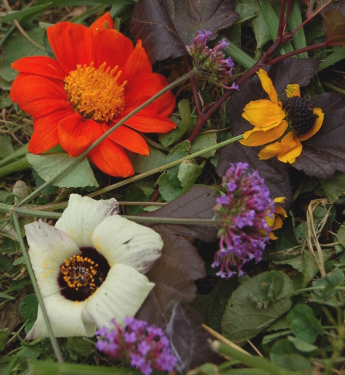
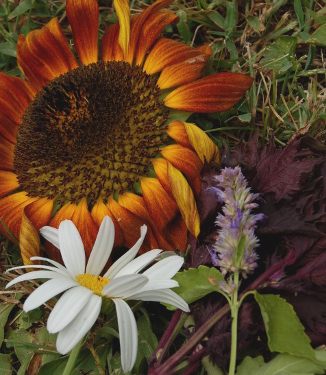


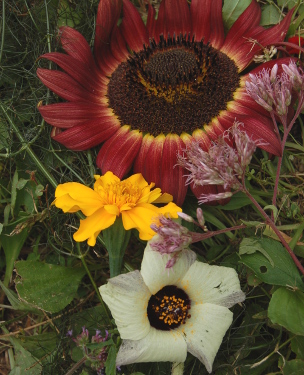


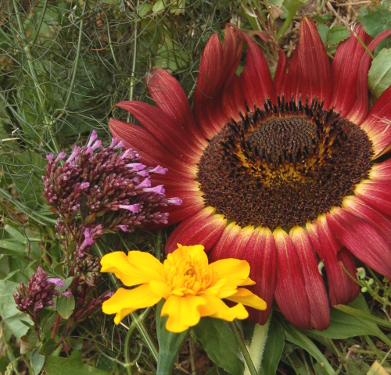


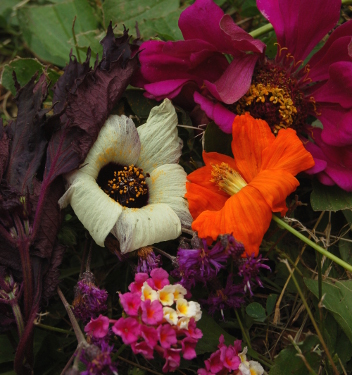
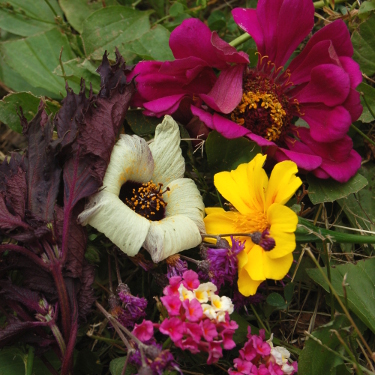




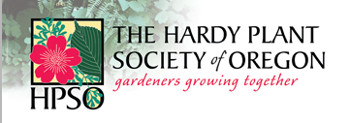





















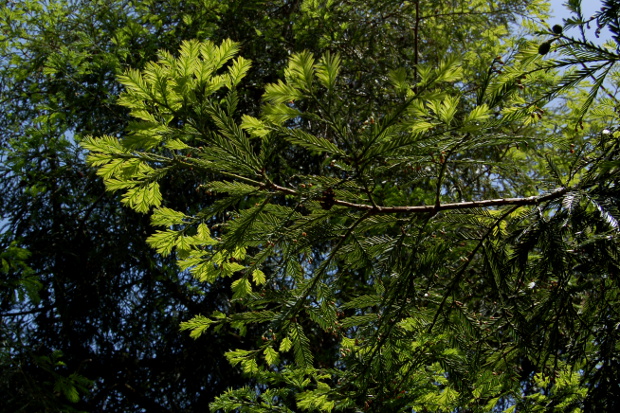

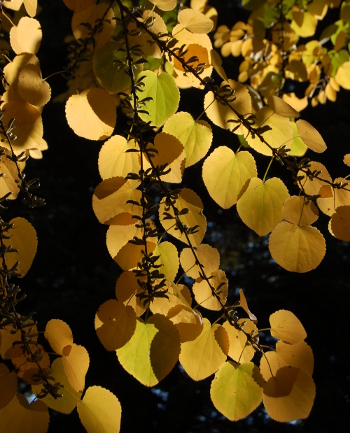

This was an interesting exercise. I love that red sunflower with the pale yellow Zinnia. And I actually like pink with orange.
Thanks, Alison! Yes, pale yellow and chartreuse can create some magical effects in the garden, especially with deep, intense colors like that red sunflower. I don’t like pink with orange too often, but I do like the color that could be described as pink-orange… like ‘South Seas’ daylily, if you’ve ever seen that one.
Thanks for the great article. I am going to try that with my garden club- looks like lots of fun and it will spur lots of discussion about color preferences.
Vicki, Glad you liked it! A hint: you might want to put the flowers in water. They started to wilt on me just when I was getting into it.
I have been fortunate to own four homes that needed complete landscaping remodels. (At least that is what I told my husband.) The first was in Portland, Oregon, and I used pastel pink, pastel yellow, pastel lavender, and what ever blue I could find. The blue was sometimes a little strong, but it livened up the grey days of Spring. In central California, I used all white for the front landscape. It was stunning, but I got bored and used hot pinks and purples in a side yard just for fun. My second California house had a red door so we did the front in dark red and purple flowers. I liked that yard very much, too. We just bought our fourth house and we are in California where the light can be harsh in the summer. I decided to try something difficult. The house is “hospital scrub green/blue” until it needs new paint in a few years. It will be a softer blue in the future. I chose to landscape in peach, soft yellow, and steel blue. The steel blue doesn’t quite work with the house color, but that will change in a few years. It’s been fun to choose different color schemes, but my backyard is going to be a riot of color so I can pay attention to cut flowers, birds, and butterflies. I wonder if I will be satisfied with such a unplanned color scheme even though it is not in public view? Thanks for the fun post. It made me really think.
I fall love into these beautiful flowers. I want to grow ornamental trees in my own garden. This article helps me a lot. Though it required a lot of labor and tools.
Keep up the good posting, Amy.
Thanks